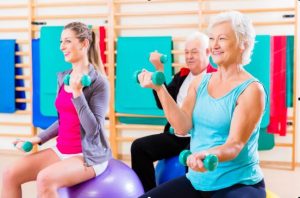9 Ways to Whittle Your Waist and Boost Your Back
Has your doctor suggested you shed some pounds to ease your low back pain? Carrying extra weight is bad news for your back. Each pound puts more stress on the spinal discs, muscles, and ligaments. If the weight is carried in the stomach, the pelvis can be pulled forward, further straining the lower back. What you can do about it you’ve probably been told that losing weight is simple: just take in fewer calories. If you’d like some more specific ideas, read on: 1. Check with your doctor first. The last thing you want is to make your pain worse by charging into the wrong kind of physical activity. Ask your doctor which kind of exercises are best for you and which should be avoided. Low-impact moves, such as walking or water therapy, are often recommended at first if you haven’t exercised in a while.

- Target both diet and exercise. It can be tempting to focus only on food, or only on exercise, but tackling both is likely to have the biggest payoff. It’s also best for your body: You need nutritious food for energy, and physical activity is required to deliver nutrients into the spine. 3. Let your phone be your workout buddy. The number of fitness and diet apps available could make your head spin. There are fitness apps to track your steps, stairs climbed, and miles walked or biked. You can also watch instructor-led workouts on your smartphone. Diet apps help you compare calories in menu items, set goals, and track your progress. If apps aren’t your style, check online weight-loss calculators and goal-setting resources. Search for “weight loss calculators” to get started.
- Consider a personal trainer. Do you prefer the personal touch? If you worry your motivation will waver or feel intimidated at the gym a trainer could be just what you need. You’ll learn which exercises burn fat the fastest, how to build muscle, and which weight machines fit your needs. If cost is an issue, ask whether small-group training sessions are offered. Even a single session with a trainer can teach you plenty. 5. Cut back on sugar. Many of us are eating much more sugar than we realize. Take a look at the nutrition labels on your “healthy” granola bars, cereal, and yogurt. This may be the time to switch to healthier alternatives.
- Keep a food log. Tracking your food online or on paper is a good way to pinpoint food pitfalls and find ways to sidestep them. Maybe you nibble on potato chips while watching TV, or can’t resist a midnight snack. Once you see the pattern, you can be ready for these cravings by having some low-calorie snacks handy. Hard boiled eggs, baby carrots, or a low-calorie cheese stick may work well as replacements. 7. Make exercise part of your routine. If you have a dog, grab the leash and go each morning or when you get off work. No dog? Head out for a walk on your own or with an exercise-minded neighbor. 8. Take a class. You don’t want exercise to be a chore or a bore. Classes can be great for procrastinators who can’t seem to fit exercise into the day. Pilates, yoga, and tai chi are all exercise approaches that can help strengthen the back while burning calories.
- Drink more water. Staying hydrated helps in two ways. First, the spinal discs are mostly water, and need fluids to function well. Second, drinking a glass of water before a meal may help you feel full faster and eat less. Replacing soft drinks with water or other calorie-free drinks is a quick way to cut calories. You’re likely to feel more motivated some days than others. Keep in mind that any weight loss is better than none. Even losing 10% of your body weight 16 pounds for a 160-pound person can make a difference in your health.
Author bio:
Dr. Atif writes health articles for body pain tips. His articles have appeared in a number of e-zine sites, including EzineArticles, ArticlesBase and HubPages. Learn more about how Dr.Atif’s health articles by visiting his blog at Body Pain Tips


